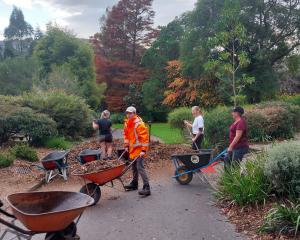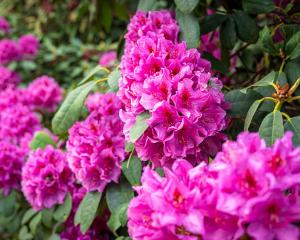Apply a little practical science to get better vegetables, suggests Gillian Vine.
In the vegetable garden, the importance of crop rotation has long been recognised.
There are two main reasons for growing plants in different areas each year. The first is because vegetables from one family do not take up the same nutrients as those belonging to another clan. The second is to minimise disease: it is well known that growing brassicas such as cauliflower and cabbage in the same place year after year greatly increases the likelihood of clubroot.
However, moving things around is not sufficient to ensure bumper crops. Obviously, manures and fertilisers are needed to maintain the supply of nutrients, with green manures such as lupins or red clover ideal for ensuring the soil has sufficient nitrogen to give good leaf growth and colour. Green manures also supply sulphur, often lacking in light soils, and an essential element in forming those little nodules found on the roots of peas, beans and other legumes. These nodules contain nitrogen-fixing bacteria, to get the good leaf growth and colour needed in vegetables. Sulphur also helps prevent some fungal diseases. Ironically, reduction in sulphur dioxide emissions by burning less low-grade coal has seen a worldwide slump in ''natural'' sulphur available to plants. In addition, fewer commercial fertilisers have a sulphur component, so it is up to the gardener.
High-bulk compost improves soil texture, and gypsum helps break up clay soils, as well as being a good source of sulphur.
The other important factor in successful food crops is having an idea of what the pH requirement is of each vegetable.
The pH scale was developed to measure the acidity level of soil. The lower the number, the greater the acidity, with peat bogs around 3.5 and high country tussock land about 4.8. At the other end of the scale, a desert may have a pH of 10.
Most of New Zealand is slightly acid - which is why so much lime is used on farmland - but there are soils with a pH as high as 8. For the home gardener, it is worth testing the soil and simple kits are available at reasonable prices. The surprise is often discovering how much variation there can be in a relatively small area, which is why in, say, a line of carrots one part may look decidedly weak compared to the others in the row.
Vegetables do best in slightly acid soils, where pH values are in the 5.5 to 6.5 range, but there are some variations. At the more acid end of the scale, potatoes, rhubarb, oca (yams) and strawberries are best suited to a pH of 5.0 to 6.0. They resent lime, so concentrate on providing a rich soil. The majority of vegetables - including beans, peas, corn, cabbages, kale, Brussels sprouts, radishes and tomatoes - grow better in soils in the 5.5. to 6.5 range. One brassica that likes a more alkaline soil (6.5 to 7.0) is the cauliflower and not applying enough lime can be the reason for it performing poorly when cabbages in the same area develop brilliantly.
Beetroot, celery and members of the onion clan (leeks, garlic, shallots and all onions) can be grouped with cauliflowers, which enables better crop rotation, too. Using poultry manure before planting these crops may reduce the amount of lime needed, while adding rich organic material.
If you get the soil right, bumper crops should follow and although the vagaries of the weather can throw the gardener's plans into disarray, healthy plants are more likely to cope with everything nature flings at them.












